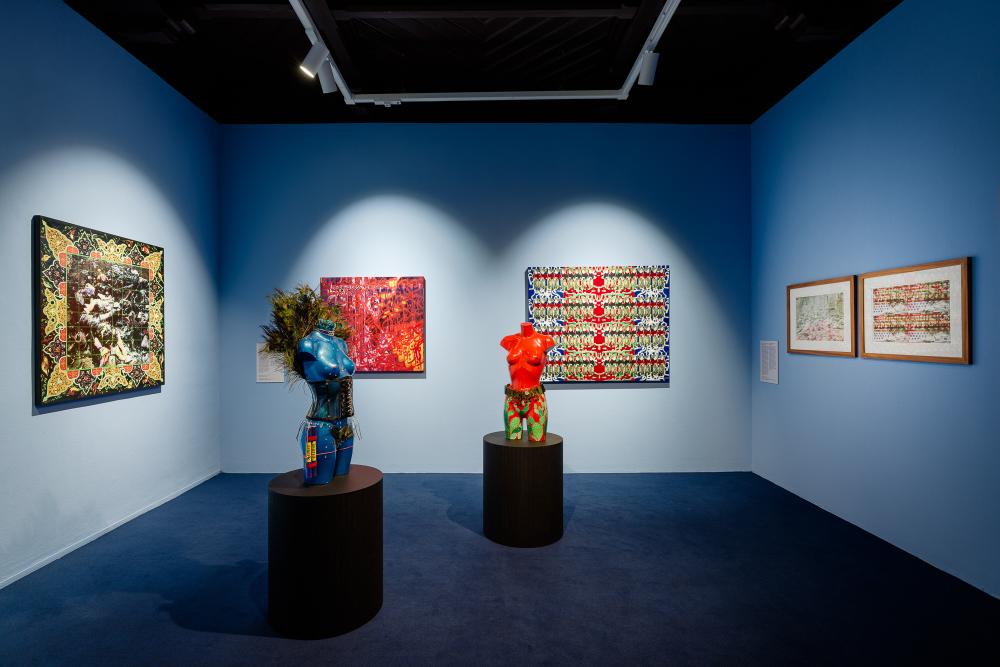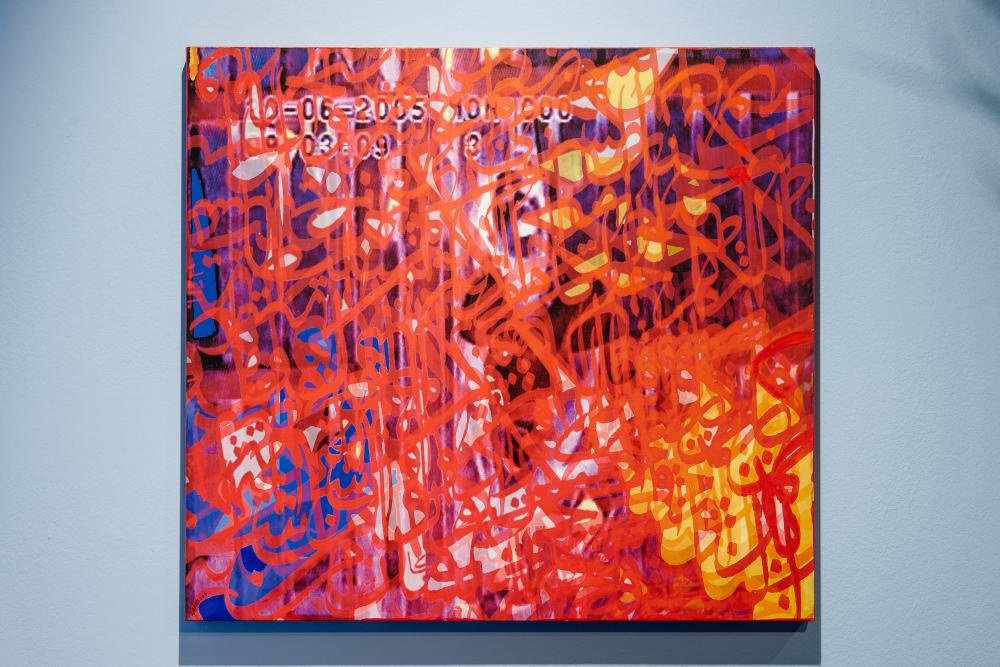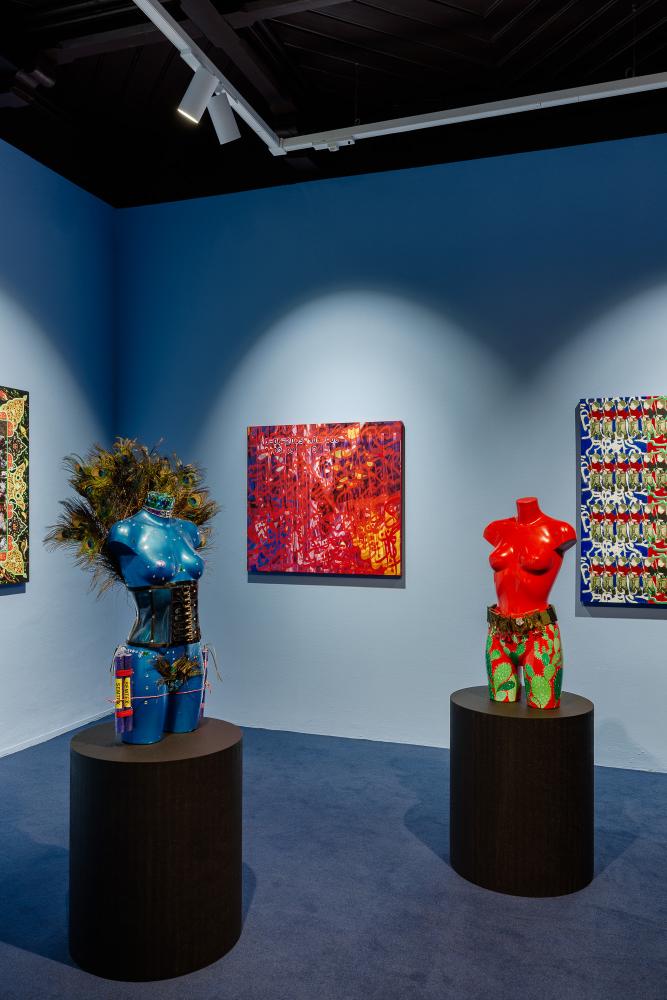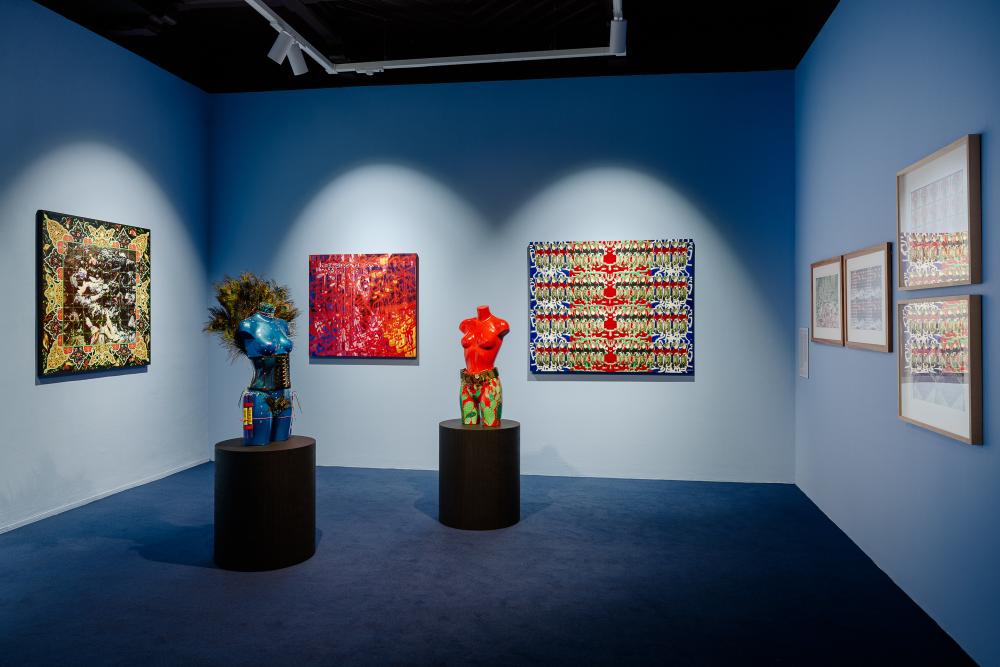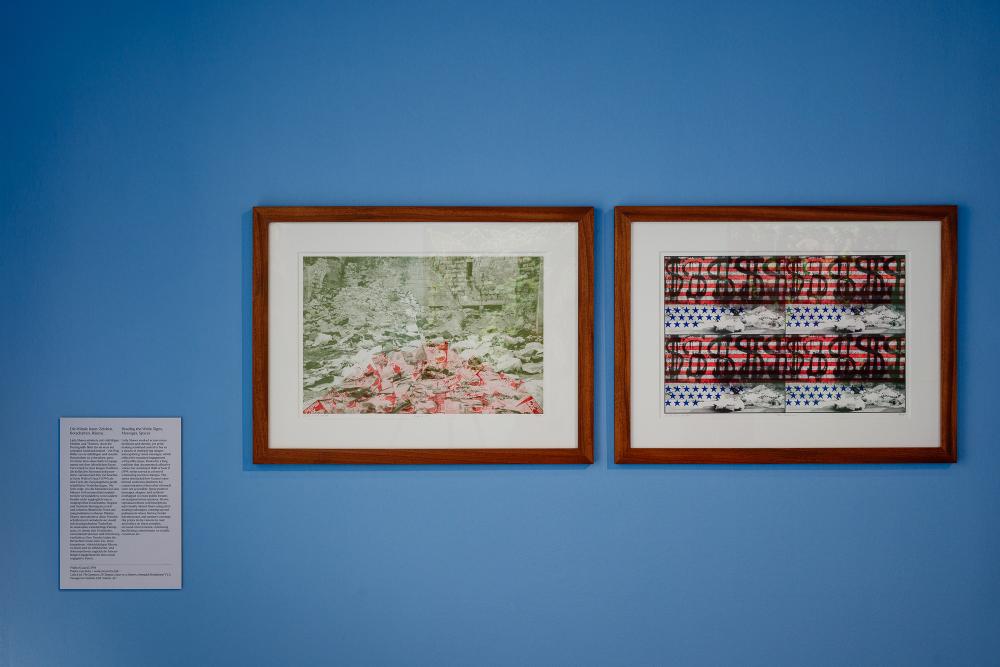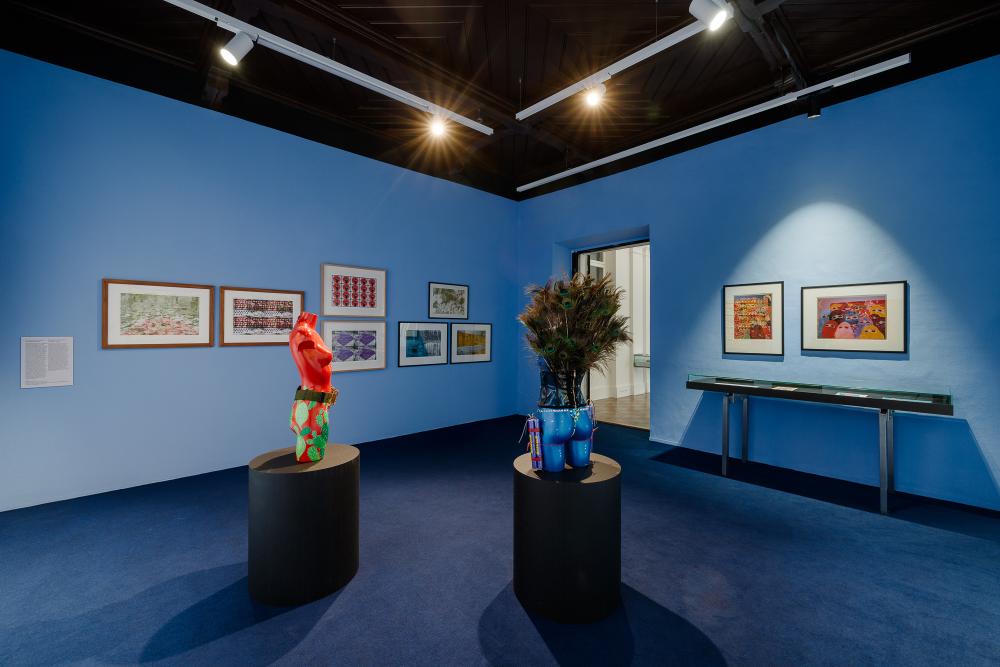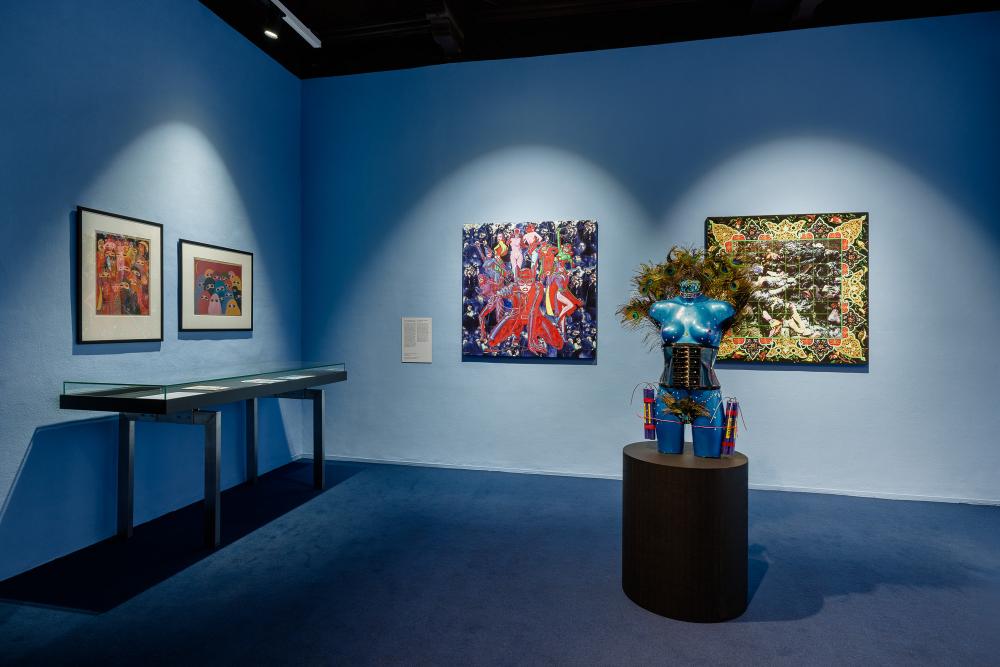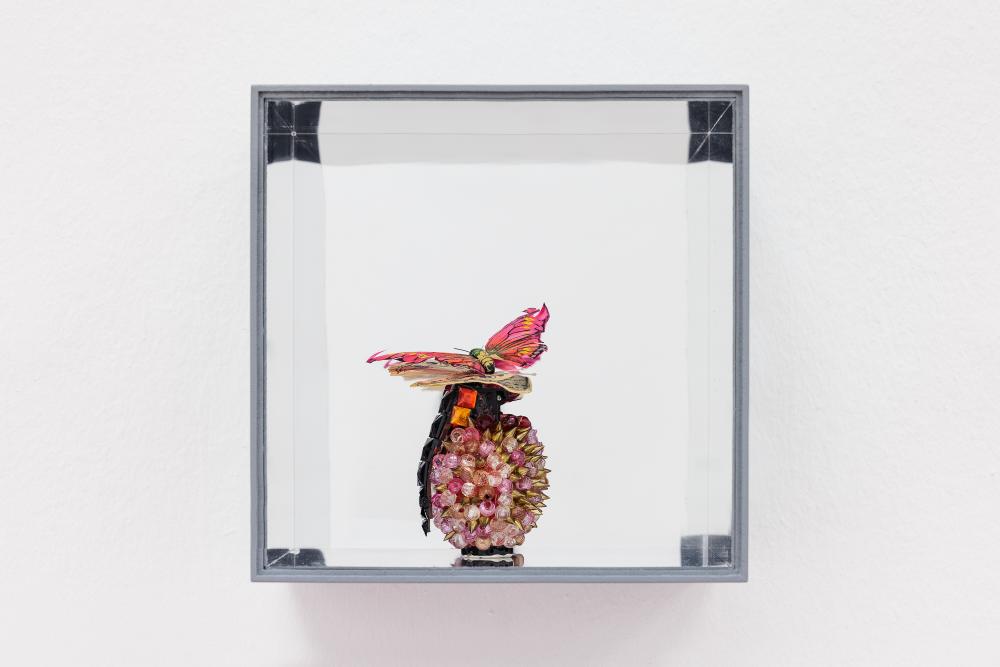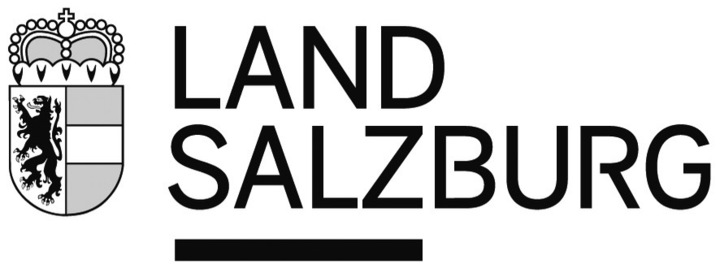


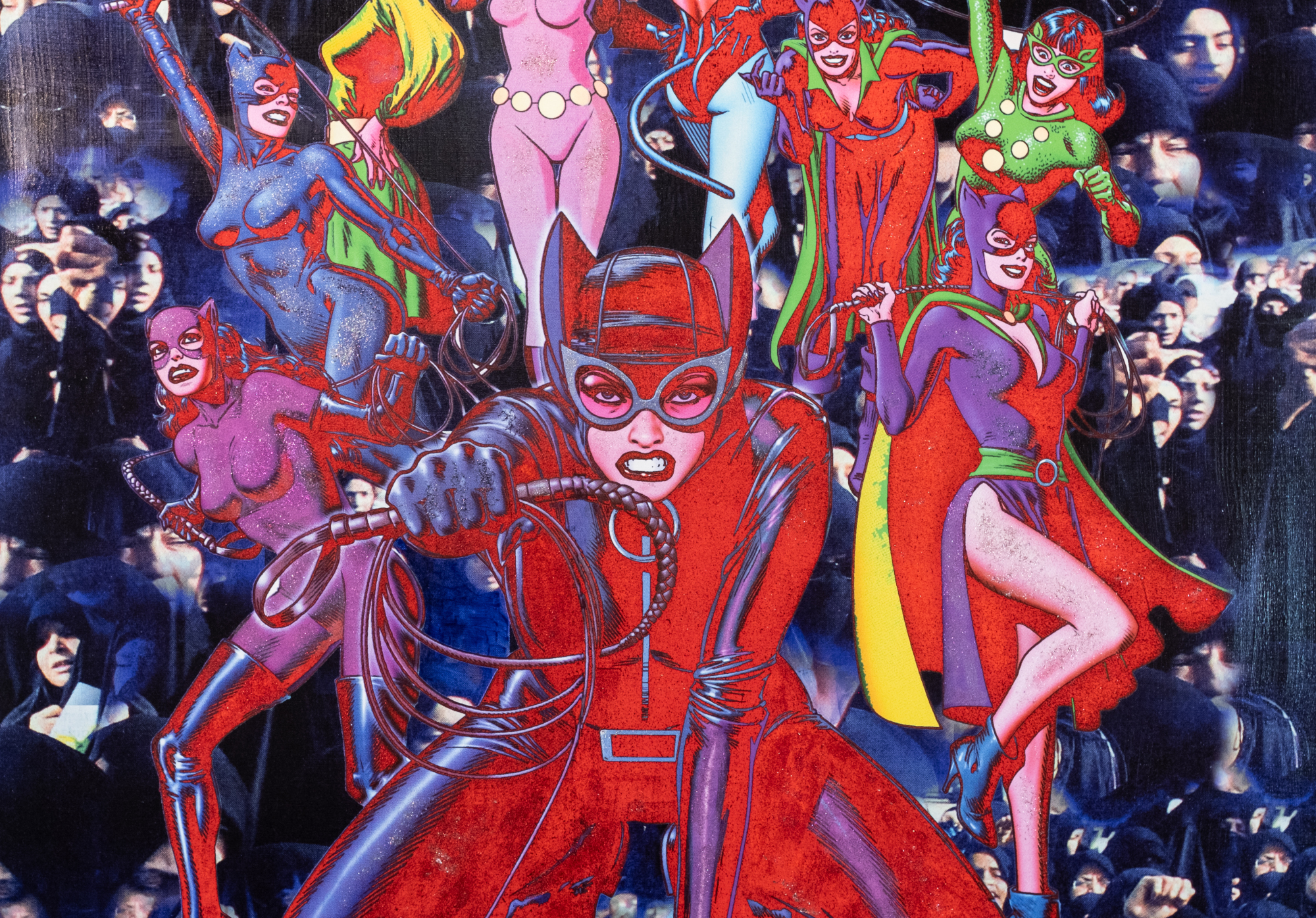
The first presentation of Laila Shawa’s art in Austria takes its title from the legendary summer program founded in Salzburg by Oskar Kokoschka. For Shawa, a Palestinian artist who attended the school from 1960 to 1963, the influence of Kokoschka, who had founded his school along humanist principles in the aftermath of WWII, was a foundation to her later practice as an artist and educator. While referring to this brief moment, this exhibition takes Salzburg as a departure point, not a destination: one moment in Shawa’s transnational trajectory that spanned Gaza, Rome, Cairo, and London.
The works presented in the Studio space, rather than offering a complete historical narrative, constitute a capsule in which glimpses of diverse geographies shape a uniquely trans-cultural visual language. In her work, Islamic ornament meets Western pop art, Byzantine calligraphy sits beside graffiti tags. This distinct artistic style, sometimes called Islamo-pop, is not hybrid in a conciliatory sense, but in a critical one: it actively repurposes inherited forms across cultures to expose systems of power that cut across borders. In doing so, her practice extends and complicates the canon of global contemporary art.
Shawa’s practice is far from medium-specific, as it encompasses painting, sculpture, installation, and drawing. However, it is the printmaking in her oeuvre that serves both as a symbolic and functional tool: a means of multiplying images, amplifying messages, and resisting the singular, elite status often attached to art. Historically, printmaking has played a crucial role in democratizing art and amplifying social critique—most famously in the work of 19th century satirists like Honoré Daumier, whose lithographs skewered the monarchy and bourgeoisie at a time when visual imagery was beginning to circulate widely beyond elite audiences. In this lineage, Shawa’s works, most vividly in Walls of Gaza lithograph series, which she started in the 1990s, grew from the tradition of socially engaged printmaking—fostered also by Oskar Kokoschka—as a tool of collective witnessing and public engagement. By harnessing repetition and accessibility to challenge the structures of power, her printmaking was a medium but also a method to engage with visual culture.
Throughout her career, Shawa critically addressed systems of violence, be it patriarchal, colonial, military, or religious, and turned them into emotionally charged, but often playful visual forms. She understood the commodification of the human body, especially the female body, as a central mechanism of power: whether through religious control, cultural roles, political propaganda, or the global media machine. Her work exposed how the gaze is never neutral, but always instrumental in shaping what is seen and unseen. Herself a breast cancer survivor, Shawa once recalled: “While undergoing radiotherapy, I watched on television the precision bombing of Baghdad by US airplanes, forever linking the two events in my mind and in my art.” For her, the body of a woman and the body of the land were inseparably intertwined: violated, scarred, and politicized. In Disposable Bodies (2011–2013), headless female mannequins are transformed into unsettling sculptures that comment on the media portrayal of female suicide bombers. The series exposes how women’s bodies are turned both into icons of martyrdom and objects of desire, simultaneously erased and sensationalized. Other works point to the criticisms of self-brutalization. In a series entitled Trapped, still images of the screaming person from the CCTV footage are placed behind a mesh of calligraphy. The writing becomes denser until it becomes impossible to read and understand, speaking to the misreading or miscomprehension of religion and ideology.
Shawa’s lifelong advocacy for human rights, women’s emancipation, Palestinian freedom, and cultural resistance extended well beyond the studio. Her biography was not only about creating art, but also about enabling others to engage in it. After returning from Europe in 1964, she began working as an educator in Gaza and later contributed significantly to building the cultural infrastructure there. When asked by a journalist to name the career accomplishment she was most proud of, Shawa responded: “It would not be a painting, but a building I helped design and build in Gaza. It took 12 years of my life, my father’s life, and my ex-husband’s life to build a cultural center in Gaza that carries the name of my father.” She was referring to the Rashad Shawa International Cultural Centre. Financed by the Benevolent Society for the Gaza Strip, the centre was completed in 1988 as a hub for cultural exchange, events, and performances. Featuring four stained glass panels designed by Shawa herself in the large foyer and library, the building served a wide range of social and artistic functions over the years. In November 2023, it was destroyed by Israeli warplanes.
Shawa’s art, created out of the socially engaged tradition of printmaking and the seductive immediacy of pop-art, delivers subversive political messages but also speaks to complexities of our epoch with beauty and humor. From studying in Salzburg under Kokoschka and in Rome under the socially committed Renato Guttuso, to integrating the traditions of Islamic geometry, Persian miniatures, and Byzantine icons with pop-art idioms, Shawa created a polyphonic visual language. Her works are seductive, critical, and indignant; they point out injustice and hypocrisy. Her art was always tied to public engagement, but for an artist, as Shawa herself stated, responsibility for the artwork ceases when it leaves the studio: “It takes on a life of its own and how it is perceived depends more on the makeup of the viewer than the intent of the creator.” The school of seeing is always linked to the responsibility of the one that sees.
CURATED BY Jakub Gawkowski.
OPENING: 25 July 2025, 8:00 PM
7:00 PM ARTIST TALK poptimism
Esben Weile Kjær, Jakub Gawkowski, and Mirela Baciak in conversation with Greta Rainbow (Writer-in-Residence SKV x Spike). In collaboration with Salzburg International Summer Academy of Fine Arts.
10:00 PM - 00:30 AM DJ Set & Dancefloor Session with Seba Kayan
Laila Shawa: School of Seeing will be accompanied by a series of workshops devised to cultivate a differentiated gaze—one that resists singular narratives and rehearsed perceptions.
In collaboration with TRAFO Trafostacja Sztuki Szczecin, where the exhibition will be presented in Autumn 2025.
Laila Shawa (*1940, Gaza – ✝2022, London) received her first formal training at the Leonardo da Vinci Art Institute in Cairo in 1957–58. In 1958–64, she studied at the Academy of Fine Arts in Rome, spending summers at Oskar Kokoschka’s School of Seeing in Salzburg. After concluding her studies, Shawa returned to Gaza to supervise arts and crafts education in refugee camps for the United Nations Relief and Works Agency and entered into an informal apprenticeship with the UN war photographer Hrant Nakasian. In 1967, she moved to Beirut, where she stayed for nine years as a full-time painter. With the outbreak of the Lebanese Civil War, she relocated to London and for the following decade, she spent most of her time in Gaza where she collaborated on the design and construction of the Rashad Shawa Cultural Center. Until her passing in 2022, she lived in London, where she remained actively engaged in her artistic practice.
Image: Laila Shawa, Can We?, 2011, giclee print and acrylic on canvas, 120,5 x 120,5 cm. Courtesy of the Laila Shawa Estate.



